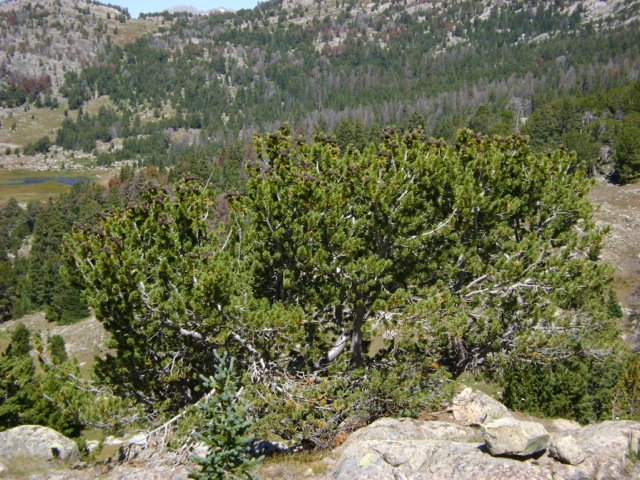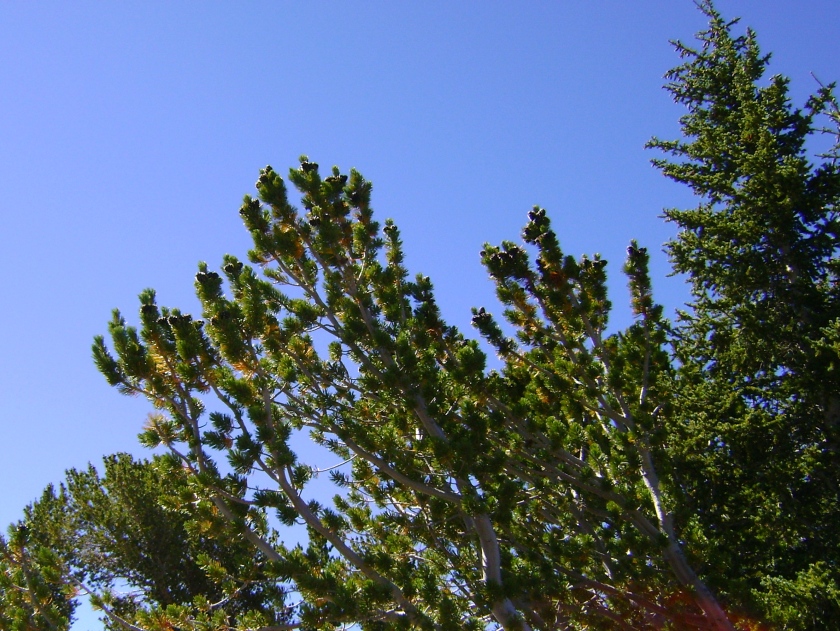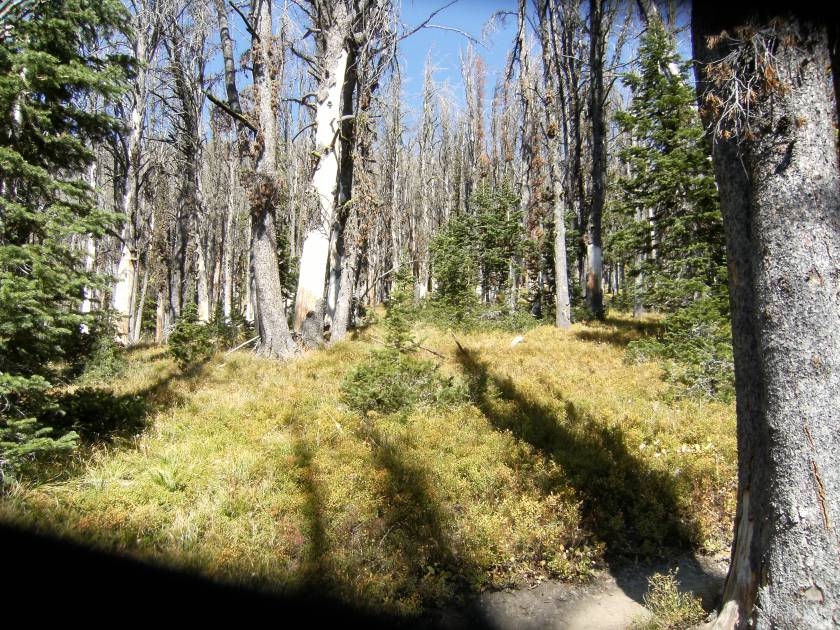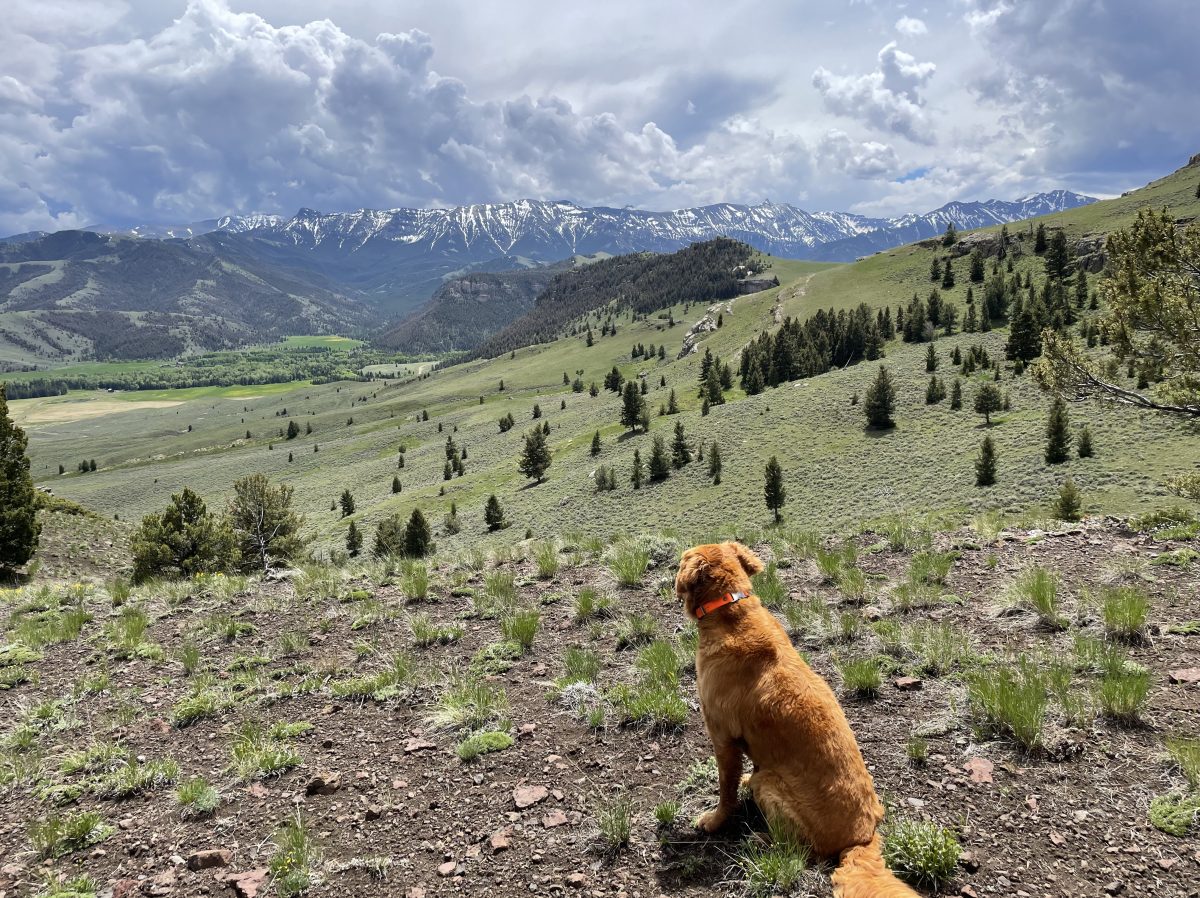What is the PCA? If you care about grizzlies, then this knowledge is important.
The PCA stands for Primary Conservation Area and is a designated area within the Greater Yellowstone Ecosystem with special rules to protect and insure that the grizzly bear population will thrive into the future. This area has special rules regarding activities that would disturb bears, such as excessive roads, ATV’s, numbers of elk hunters, etc. The aim is to ensure genetic diversity and keep a minimum of 500 bears. This area was first outlined during the bear’s period of recovery. The PCA rules will still apply even after grizzly bears are delisted, which will probably come in 2015.

Now look at the above image. The actual designated PCA is in blue. The suitable habitat is in red. Notice there is an ‘Italy-shaped’ leg in the lower right that is not in the PCA but is suitable habitat. The majority of this is the Wind River range. See there is a main highway between Riverton and Jackson that cuts right through a small section of the PCA. In order for bears to inhabit the Winds, they have to cross this highway, and the main corridor into the Wind River range from the north side (Gros Ventre/Upper Hoback area) of the highway to the south is through the Upper Green River Valley. Per Wyoming Game & Fish own conservation guidelines:
Based on current road densities, presence of domestic sheep and current levels of conflict with livestock, the upper Green River area on Forest could also be considered unsuitable for grizzly bear occupancy. However, important biological issues make the Upper Green River area very important in ensuring CS (Conservation Strategies) population and distribution objectives will be met long-term.The Upper Green River area is presently occupied by grizzly bears and is important contiguous habitat that links the bear population between the Gros Ventre/Upper Hoback area, Upper Wind River Range, and core bear habitat north of this area.
So why am I talking about this? Because it is rare, and I mean rare, for a bear to get through the Green River corridor without getting into trouble with livestock. That valley is saturated with sheep and cattle allotments (these are on public forest service lands with some 7500 sheep and 22,500 cattle in a 323 square mile area). Bears are moved, or removed lethally. Recently the ‘take’ quota for grizzly bears was just raised in that area and even more important, the limit for female grizzlies kills was eliminated there. Therefore, it is difficult for a bear to get pass through this bottleneck corridor into the Wind River habitat. Yet the Winds provide excellent, essentially uninhabited habitat.
Another red flag for the Winds and bears is that the southern portion of the range is excluded from conservation strategies because of several factors. First because there are still very active sheep allotments there (these are sheep allotments on Wilderness). Also because of heavy backpacker summer use. But I am here to tell you that the best and healthiest white bark pines are in the southern portion of the Wind Rivers.
I’ve been backpacking the Winds every year for over 15 years. I’ve seen many of the northern and central Wind River White Bark Pines face a heavy toll from the beetles. Not as heavy as the rest of the Greater Yellowstone Ecosystem, where White Bark Pines could be considered to be functionally dead. Reading my previous post, you’ll note that even the Interagency Grizzly Bear Study Team admits their own transects are 75% dead. But it appears that even in the worst portions of the Winds, its more like 40-50%; while my recent trip to the Shadow Lake area of the Southern Winds, I’d estimate the mortality at around 20-30%.

And while the Interagency Grizzly Bear Study Team noted that this years cone production was ‘good’ at 20 cones per tree, my estimate in the Washakie Creek environs was more like 70-100+ cones per tree! Yet, not one grizzly bear will be able to reach this area!

Although the Interagency Grizzly Bear Study Team completed their legally required study on the grizzly bear diet last year, they stated that while white bark pines will not last in the Greater Yellowstone, bears will find other foods. I feel this statement makes assumptions that cannot be known. Rocky Mountain grizzlies are not like Alaskan bears that eat salmon with high protein and fat. Our bears depend on limited sources of fall fattening foods–essentially moths and pine nuts. If we want to ensure the bear’s survival, we should be opening up all the ‘suitable habitat’ in the GYE.

Corridors like the Upper Green, full of livestock on public lands, need tighter livestock rules, not dead bears. These are not private land ranchers, but ranchers using public lands at very low rates. Rules like running cowboys with cattle, removing sheep or at least penning them at night with guard dogs, need to be set down by the Forest Service. And public lands ranch-at-your-own-risk should be another. And even cattlemen do this in other circumstances. Cattle are run over on highways regularly. Cattlemen who run herds on open range factor these losses into their bottom line. They just figure they’ll lose a certain amount to cars every year and so don’t bother moving their herds. In my area, they don’t even turn on the electric fences that the forest service provides them. So why don’t they factor in predation by bears on these same lands?
One other thing that irked me in their conservation strategies comments was that because of high use of summer backpackers in the southern Winds, the area is unsuitable for bears. Just like the rest of the PCA, backpackers and hikers need to learn to hike and live with bears. The southern winds are particularly heavy use because of the Cirque of the Towers, an awesome array of granite peaks that attracts climbers from all over the world. People have to adapt and begin to carry bear spray and learn to share the area. Bears are quite good at avoiding people, using corridors at night, bedding in hidden places during the day. Grizzlies in the winds will heighten hikers awareness–a good thing.

Hiking in this fabulous bear country, seeing all those wonderful nuts, yet observing no bear sign, contained a certain sadness for me. In my own area next to Yellowstone Park, 90% of the white bark pines are dead and bears are roaming around looking for food. Here I was surrounded by their prime fall food going to waste due to inept human management.
I like to remember what Native Americans called Grizzlies–‘humans without fire‘. Let’s treat them with that kind of respect.

A very enlightening blog. I had no knowledge about PCA, nor had I ever seen the boundary map. This is certainly disturbing, as well as food for thought. Too often rancher use of public land is treated almost like they own it. Like you, I have always thought it should be use at your own risk.
LikeLike
Good information. Thanks for sharing.
LikeLike